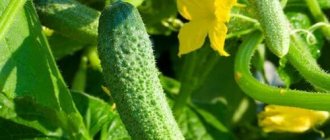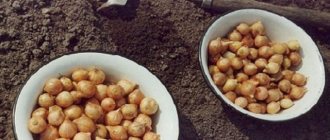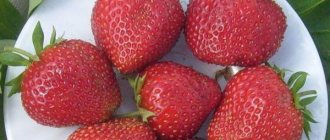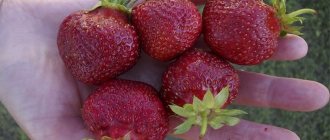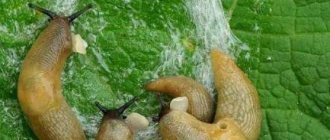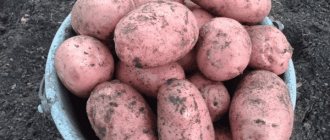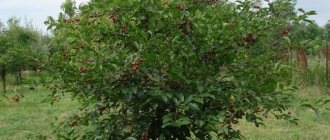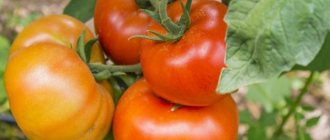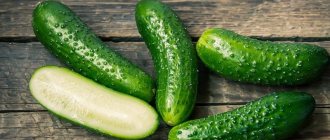Origin of the cucumber variety "Lilliput f1"
Lilliput cucumbers (F1) were bred by Russian breeders. This company has been known to vegetable growers since 1993 and is the originator of such high-yielding cucumbers as Emerald Earrings (F1), Shchedrik (F1). The hybrid was included in the State Register of the Russian Federation in 2008.
Which regions are best to grow in?
Since the review variety is intended for cultivation under film and in greenhouses, it successfully bears fruit throughout Russia. In the southern regions, cucumbers are often planted in unprotected soil.
Care
Recommendations for caring for plants of the review variety:
- Frequent watering and irrigation with warm water;
- Regular loosening of the soil in beds with cucumbers;
- Weeding, removal of tops;
- Feeding bushes with organic and mineral fertilizers.
It is best to water the plants using a garden sprayer or drip irrigation system. In the early stages of bush development, it is necessary to use only settled and warm water.
Proper fertilizing significantly increases the yield of Liliput cucumbers (F1). Perfect for this:
- Phosphorus fertilizers;
- Sifted wood ash;
- Herbal infusions.
Description of Liliput F1 cucumbers
The Liliput cucumber is not suitable for every region. Seeds are ready to become active only when the soil warms up to 25º or higher. However, you should not give up cucumber; plantings are actively developing in greenhouses. Moreover, its characteristics are very tempting:
- stems are of medium height, the plant is prone to branching;
- foliage of medium density;
- the ovary is bouquet, in the axils there are up to 10 cucumbers.
Attention! Cucumber can be consumed without heat treatment; the fruit is also suitable for any type of preparation.
| By type of growth | Medium-climbing |
| By type of branching | Strongly branched |
| By type of pollination | Parthenocarpic |
| Planting scheme | 50x50 cm |
| Weight, length and shape of the fruit | 80-90 g, 7-9 cm, cylindrical, with pronounced tuberosity, uniform green color |
| Ripening period | Early ripening (38-42 days) |
| Usage | Universal |
| Drop off point | exhaust gas / greenhouse |
| Diseases | Resistance to powdery mildew of both types, immunity to root rot and olive spot |
| Flowering type | Female |
| Productivity | In a greenhouse up to 11.5 kg/m2; in exhaust gas – from 10.5 kg/m2 |
General information
Lilliputian F1 is a hybrid crop. The variety is resistant to many diseases. It has high yield and amazing taste. Cucumber bushes are medium-sized, branching. Leaves are medium sized. The color range of the leaves ranges from green to dark green. In the area between the base of the leaf and the stem there are 7-10 ovaries.
Characteristic:
- This variety produces side shoots.
- Weaving is quick.
- Female type of flowering.
- Bundle-shaped at the ovary, up to 10 female-type flowers may appear on a leaf node.
- A leaf node is the buds, the leaves on the stem.
- The shoots weave well.
The most important of all the advantages of the variety is self-pollination. Open ground can be used to grow vegetables.
Attention! When planting on a ridge, seedlings initially need film cover. Gardeners note that the Liliput F1 variety is also suitable for garden planting.
The Liliput F1 cucumber has an elongated cylinder shape. The color range varies from light to dark green with small white stripes. The skin is not dense. The flesh is crispy and juicy. With the correct development of the placenta, where the seed primordia are located, the variety has no voids.
The average weight can reach 100 g. In preparations, under the influence of temperatures, vegetables do not lose their taste properties. The length of the fruit reaches 9 cm. Fruit ripening begins quite early, up to approximately 40 days from the moment of germination.
The taste properties are wonderful, without bitterness, it has notes of freshness and sweetness. Over-ripening of cucumbers does not impair their taste and commercial quality. The pleasant taste can be felt not only in preparations, but also in salads. The aroma is felt both fresh and salted. Vegetables are rich in vitamins (A, B, C, PP, beta-carotene) and microelements (K, Mg, P, Cr, folic acid), and fiber. They grow even under unfavorable conditions.
Fertility is high, 11 kg per 1 m2. Increased productivity is facilitated by:
- good seed material;
- fertile, fertilized soil;
- growing conditions;
- care and sorting;
- frequency of watering (at the root);
- timely feeding;
- frequent collection.
The volume of these cucumbers exceeds other varieties by 2-3 times due to early ripening during the season. In greenhouse conditions, due to their small size (gherkins), they harvest much more than in open ground. Since the bushes and fruits are protected from pollen and there is no risk of defects.
Before purchasing, gardeners, especially for the first time, try to familiarize themselves with the advantages and disadvantages of a given variety.
Note! Quite expensive seeds. Fruits can become overgrown if not picked in time (taste properties are not lost).
Positive sides:
- ripens early;
- high yield that can be increased;
- resistance to many diseases and insect pests;
- few seeds in the fruit;
- does not require pollination;
- flowering type – female only;
- beautiful presentation;
- stress-resistant;
- universal in use;
- easy to care for;
- possibility of long-term storage;
- good transportation.
There are also disadvantages. They do not form seeds, you will have to purchase them again, there is a lot of branching of the bush and the appearance of non-standard fruits is possible.
Description of the bush
Cucumbers grow quickly and tend to form determinate side shoots. The bushes are medium-sized, the flowering type is female. The ovaries have a bundle shape. For each leaf node there are from 3 to 10 female flowers. The leaves are medium in size and vary in color from green to dark green.
Description of fruits
Cucumbers of the Liliput variety have the following description:
- The fruits are cylindrical in shape, with a narrowed tip.
- The length of one green leaf is on average from 7 to 9 cm.
- One cucumber weighs on average from 80 to 90 g.
- The peel is not thick, but dense, and has small tubercles on the surface.
- The color of the cucumbers is not uniform. Each fruit is colored in a gradient with a transition from a light green crown to a dark green tail. Short white stripes are visible on the surface. The top of the green leaves also remains white.
- The Liliput variety has excellent taste. The vegetable pulp is juicy and aromatic. Small fruits are perfect for pickling and canning them whole. In addition, various vegetable salads are prepared from them.
- The productivity of the Liliput variety is high. On average, from 1 m² you can collect from 10 to 11 kg of fruit.
- Zelentsy tolerate transportation well and retain their presentation for a long time.
Advantages and disadvantages
A cucumber called “Liliput f1” belongs to the category of hybrids that have many advantages that determine the popularity and demand for this variety:
- self-pollinating, female type of flowering;
- use not only fresh, but also for salting and pickling;
- very early and massive fruit formation;
- excellent taste and high yield;
- marketability of greens and good keeping quality;
- formation of determinant side shoots;
- tolerance to peronosporosis;
- complex disease resistance.
The hybrid form is unpretentious, bears fruit well in almost all types of soil and is suitable for cultivation in most regions of our country.
Main characteristics of the variety
The work on creating the variety was carried out by breeders Shamshina A.V., Shevkunov V.N., Portyankin A.N., and it was they, along with Agrofirma Gavrish LLC, who were assigned the authorship. Liliput F1 has been listed in the State Register since 2008.
The variety is recommended for cultivation in protected ground (greenhouses, hotbeds) on private farms, however, it is also successfully grown in open ground. Lilliput F1 is zoned in the Northern, Northwestern, Central, Central Black Earth, Middle Volga, Volga-Vyatka and North Caucasus regions.
Resistance to pests and diseases
The variety is immune at the genetic level to many diseases:
- MR;
- LMR;
- root rot;
- olive spot.
During an epidemic, preventive procedures will reduce the risk of infection.
What is used:
| Infection | Treatment |
| MR | Solutions with added iodine, milk Soap solution |
| Gray and white rot | Water with added soda |
| Bacteriosis | Trichopolum (2 tablets dissolved in 1 liter) |
Among the pests, slugs and spider mites are dangerous. For prevention, combined plantings with garlic and onions are carried out. The bushes are irrigated using special preparations
- Aktara
- Akarina
- Zolon.
On the eve of sowing, the seed material is soaked in 1% potassium permanganate and nutrient solutions.
Expert opinion: Cucumbers are used for preparing salads and canned dishes. Zelentsy are equally beautiful and tasty either fresh or pickled. When exposed to temperatures, they do not lose their attractiveness and crunchiness.
Pollination
It does not require pollination by insects, since it is self-pollinating (with the help of wind or the presence of pistils and stamens in the flower).
Productivity
Liliput F1 cucumbers produce a stable harvest even with prolonged rains, short droughts and other unfavorable weather conditions. The growing season of Lilliput is short: 38-42 days pass from the first shoots to a mature cucumber. This hybrid is characterized by high yield; 10-11 kg of cucumbers can be harvested from 1 m² per season.
The main factors that increase the yield of any variety of cucumbers:
- good seed material;
- fertile, fertilized soil;
- regular watering at the root;
- timely feeding;
- Frequent harvesting of fruits.
Harvesting and application
To obtain tender small cucumbers, it is recommended to collect them every day or every other day during the season. Although the cucumbers of this hybrid remaining on the bush do not overgrow much, they draw strength from the plant, and fewer new ovaries are formed.
Reference ! Hybrid Lilliput f1 is universally used and ideal for any type of processing.
Advantages and disadvantages
The main advantages of Lilliput include its rapid readiness for harvesting. However, besides this there are other advantages:
- Increased productivity.
- Presentation of hearths.
- Ripening is abundant, new greens appear daily.
- There is no tendency to overripe; cucumbers do not change color to yellow.
- Suitable for collecting gherkins, you can collect pickles daily.
- Genetic resistance to a wide range of diseases. Among them are powdery mildew, as well as root rot and cladosporiosis, which is notorious for gardeners.
Flaws:
- Temperature-sensitive, cucumber is difficult to grow without shelter.
- A support system is needed, the bushes grow strongly to the sides.
Pros and cons of the variety
The undoubted advantage of Liliput cucumbers over other varieties is the following positive characteristics:
- early ripening (on average 40 days);
- high yield (up to 11 kg/m²);
- possibility of cultivation in open ground and in greenhouses;
- excellent taste;
- absence of bitterness even under unfavorable growing conditions;
- versatility of use;
- excellent keeping quality and transportability;
- presentable appearance;
- resistance to major diseases;
- disinclination to barreling and yellowing during irregular collection of greens.
The disadvantages of the Liliput F1 cucumber variety are the relatively high cost of seeds and the inability to collect your own seed.
Features of planting Liliput cucumbers
Despite the excellent productivity of the variety, the high yield of the plant directly depends on the correct planting of the bushes. Like other crop varieties, cucumbers are planted using two methods: seedlings and sowing. We suggest studying the description of the features of planting the Liliput variety in further sections.
Landing dates
To plant Lilliput seeds for the seedling method, choose a day in mid-April. If cucumbers are intended for cultivation by seed, it is recommended to plant Lilliput seed at the end of May, when the ground temperature reaches 14 degrees Celsius.
Site preparation
Cucumbers are a crop that loves the sun, so it is necessary to grow Lilliput in sunny beds that are protected from the winds. Experts clarify that for cultivating the variety it is better to choose a site located to the south of the house.
Before planting, the selected area needs to be prepared: in the fall, the soil is dug up, all unwanted plants are removed, and future beds are fed with compost, turf, or vermiculite. Sand is also added to the soil to a depth of 2 cm. In the spring, before planting the variety, the beds must be loosened to a depth of 3 cm and potash or phosphorus fertilizers applied.
Growing by seedlings
Peat or plastic containers are used to grow seedlings. Liliput seeds are planted to a depth of 2 cm, watered and placed in a room with good lighting and a temperature of at least 27 degrees Celsius. After the cucumber seeds germinate, the room temperature is reduced to 20 degrees.
Liliput seedlings are planted in open beds when the ground is warmed up to 13 degrees, and up to 5 leaves have formed on the bushes. Bushes are planted deep to the bottom leaf (as a rule, holes up to 8 cm are dug), sprinkled with soil and watered.
Planting scheme
To plant Liliput f1 you need 4 bushes per 1 m2. This method of planting ensures abundant fruiting of the bushes and does not create inconvenience during harvesting and all processes for caring for the bushes.
Planting seeds
Before planting cucumbers, vegetable growers suggest treating the seeds and hardening them. Lilliput seed must be treated in a solution of 1% manganese. To do this, manganese is diluted with water in a 1:1 ratio and the cucumber seeds are soaked for 30 minutes.
To harden, Liliput seeds are dipped in hot water for 3 minutes, and then in cold water for the same time. After the procedure, the seeds are placed on gauze and given time to dry.
In open soil, the variety is planted in holes with a seed depth of up to 2 cm. Afterwards, they are sprinkled with earth, watered with warm water and wrapped in film until shoots appear.
In the open ground
In open ground, cucumbers are grown by direct sowing or through seedlings.
In order to grow a variety in open ground, you must:
- Choose a sunny place on a flat surface or a small hill, protected from draft winds, on which no shadow falls. The soil here should not be too acidic or too heavy; slightly acidic or neutral soil is allowed.
- It is good to plant cucumbers after potatoes and other table root vegetables, tomatoes, and legumes.
- It is recommended to plant tall plants around to provide protection from the wind.
- To improve the soil structure, you need to add manure, humus, peat, sawdust, chopped straw, coarse sand, and mineral fertilizers.
- When planting seeds in open ground, dig holes according to a 50x50 cm pattern and water.
- Place the seeds.
- Add a layer of soil.
- Add a layer of peat. Some are covered with film or glass for protection.
- When grown through seedlings, seeds should be planted 20–25 days before planting in open ground (approximately at the end of April). To do this, dig grooves 4 cm deep at a distance of 25 cm from each other and water. They can also be planted in separate pots to make it easier to replant later.
- Place seeds in the grooves at intervals of 2-3 cm.
- Sprinkle with soil.
- When seedlings appear, thin out, leaving at least 6 cm of space between plants.
- A few days before planting, gradually accustom the seedlings to outdoor conditions by taking them out into the open air.
Planting in open ground is carried out at the end of May - beginning of June.
Planting in a greenhouse
In a greenhouse, it is recommended to grow cucumbers through seedlings; if you want to grow them with seeds, plant germinated ones. Sowing of Lilliputian seeds takes place at the end of April - beginning of May; they are planted in the same way as described in the previous paragraph.
At the end of May - beginning of June, you can plant seedlings under cover. At this moment there should be 2-3 true leaves on it. To do this, dig holes about 10 cm deep, pour humus, compost, peat, 5 g of superphosphate and potassium salt into it, and pour in 0.5 liters of water.
Don't be alarmed if a swamp forms - that's how it should be. There you need to move the young plant along with the soil and sprinkle it with soil. It is very advisable to mulch the top with peat to protect against the formation of crust on the ground.
Mels F1 is an early bunching cucumber. Characteristic properties of the crop, growing rules
In recent years, cucumbers with bunched ovaries have become increasingly popular among gardeners. Mels F1 belongs to such varieties. In the description, seed producers promise a harvest of more than 400 fruits from one bush. Below is a brief overview of the culture with the basic rules of cultivation and the conclusions of gardeners who know about it from personal experience.
Description of the variety in question
Cucumber Mels F1 is a hybrid from breeders from Chelyabinsk. The variety is capable of bearing fruit in less than 1.5 months after sowing.
Attention! The seed manufacturer indicates that the cucumber is intended for cultivation in protected soil conditions (greenhouse or greenhouse).
The culture has a long, powerful stem with moderately active formation of lateral shoots. Leaves have a classic heart-shaped format with elongated petioles. The cucumber forms a bunch-shaped ovary with 2 to 7 fruits. Pollination of flowers occurs spontaneously.
The vegetable has a bright herbaceous color with well-defined light stripes reaching to the middle of the surface (see photo). The skin is covered with small tubercles. The pubescence is pronounced, the spines are light. The cucumber is not bitter, the pulp does not have voids.
| By type of growth | long-climbing |
| Branching | Medium branched |
| Type of pollination | Self-pollinating |
| Planting Density | 70x70 cm |
| Weight, length and shape of the fruit | about 100 g, 8-10 cm, elongated smooth oval, rich greens |
| Ripening period | Early ripening (36 – 40 days) |
| Application of fruits | Universal |
| Drop off point | Originator's recommendation – closed ground, greenhouses |
| Diseases | Immune protection against powdery mildew, olive spot, PTO |
| Flowering type | Female |
| Declared yield | up to 40 kg/m2 |
Declared and identified advantages and disadvantages
Cucumber Mels F1 has the following advantages:
- Pollinated without the participation of insects.
- Has outstanding productivity characteristics.
- The fruits can be used both for salads and for long-term storage.
- Cucumber is ultra-early.
- The culture is instilled with immunity from the most destructive diseases.
- The vegetable retains its quality characteristics during transportation.
Disadvantages noted:
- the hybrid cannot be propagated by its own seeds;
- cucumber is sensitive to sudden cold snaps;
- it is necessary to pay attention to the formation of the stem.
Features of agricultural technology that contribute to a good harvest
In order to achieve abundant fruiting, the following must be considered:
- with the seedless cultivation method, seeds can be planted when the soil is heated to 20 degrees;
- For seedlings, seeds are germinated at a temperature of 25 degrees, with a gradual decrease to 20 degrees when 2 - 3 leaves appear;
- no more than 2 bushes are placed per 1 m²;
- after transplanting to the garden bed, the cucumber is blinded to the point of formation of the 5th node;
- formation principle - 1 stem;
- Ripe vegetables are collected daily.
Advice. In the absence of natural soil irrigation during active growth, the cucumber is watered once every 3 days, spending up to 4 liters of water per 1 m². During the fruiting period, watering is carried out every other day. The amount of water is increased to 10 liters.
| end of March – 1st decade of April | April May | — | Blinding the first 4 nodes, pinching the upper processes | May – July |
| *dates correspond to the climate of central Russia |
Reviews
Many gardeners in their reviews give positive characteristics to the crop. However, some write that the cucumber does not have the declared super-tuftiness. Examples of reviews:
- “There were a lot of vegetables. They are all smooth and tasty. Suitable for salads and pickling” - from summer resident Maria.
- “Cucumbers are not prone to diseases,” said gardener Timofey.
- “There are no more than 2 flowers in one node,” noted gardener Marina.
- “Requires meticulous care. The variety does not produce the declared yield” - from a farmer from Russia.
- “The fruits ripen quickly and in large quantities,” shared Evgenia.
Cucumber Mels F1 is a variety that can surprise you with the number of fruits. However, to achieve good results, it is necessary to follow the recommendations for caring for the crop.
Mels F1: video
Source: https://sad24.ru/ogorod/mels-f1-rannij-puchkovyj-ogurec.html
Caring for Liliput F1 cucumbers
Good plant care will ensure high yields
Their hybrid origin makes Liliput F1 cucumbers unpretentious, but for a good harvest they need to be provided with appropriate conditions.
Watering
Watering the bushes depends on the stage of the growing season. Before flowering begins, 6 liters of water per 1 m² should be added in dry weather and 4 liters after rain. During the period of fruit formation, cucumbers require more moisture, so the irrigation rate increases to 9 liters in dry weather and 6 liters after precipitation.
It is recommended to water in the morning and with warm water. It is not recommended to water the bushes in the evening: the plants may freeze overnight due to cooling of the moisture.
Top dressing
Phosphate fertilizers or ash can be used as fertilizing. These types of beneficial substances make the taste of the fruit more rich due to its mineral components. The Liliput variety does not tolerate excess organic matter and sulfate fertilizers. Feeding should be done twice per season.
You can also apply fertilizers along with watering. Urea diluted in water in proportions of 10 g per 10 liters is used as a solution.
Hilling
Liliput cucumbers experience discomfort when an earthen crust forms after watering, so the bushes should be hilled up. You also need to take into account that the root system of the crop is located near the surface, and careless actions can cause mechanical injury to the plant.
Trimming and shaping
Bushes of this species need pruning, since the side branches grow extremely quickly. Their excess can lead to a decrease in yield due to lack of light for fruits under dense weaving.
Pruning of the bush is carried out during the period of active growth. It is advisable to leave the central stem and the first side shoots intact.
Features of agricultural technology
Growing good fruit plants requires a lot of effort and expense. For the Liliput F1 cucumber variety, two types of cultivation are suitable: the first is closed ground, the second is open.
Indoor soil (greenhouse method) - helps seeds quickly and easily take root in the soil and produce a large harvest, protects them from insect pests. Open ground (uncovered piece of land) - mainly used in warmer regions.
Grow in two ways:
- seedling;
- Direct planting of seeds in beds.
With the seedling method, seeds are placed in peat pots, plastic containers (cups, containers), tablets or cassettes with a ready-made nutrient substrate:
- vermiculite;
- compost;
- turf
It may be interesting What to do if cucumbers grow with a crochet hook: reasons, what to do Description and characteristics of the Bush cucumber variety: planting and care Why don’t cucumbers grow in a greenhouse?
Planted in the ground at the end of April or beginning of May. The planting material is covered with film. Sowing seeds in a greenhouse is carried out at a temperature of +15+18 oC. Planting scheme: 3-4 bushes per 1 m2.
To transplant seedlings into beds, wait approximately 20 days after planting in cups, when 2-3 leaves have formed. The optimal temperature for planting seedlings is + 26 + 28 ° C. When planting cucumbers, the pattern is 50x50cm. The depth of the hole in open ground is 4 cm. The soil is prepared in the fall: they dig deep, remove the sprouts, and disinfect the soil with a 7% solution of copper sulfate. The soil should be light, moisture-absorbing, breathable, pH 5.5-7.
Good soil:
- containing clay and sand (loam);
- black, rich in humus, non-layered, homogeneous calcareous, loamy-sandy, rich in potassium (chernozem);
- light, loose, containing humus, rich in carbonate (serozem)
Cucumber sprouts should be in an upright position; they can be sprinkled with peat or sawdust up to the cotyledon leaves. The bushes must be tied to long poles or a special crate. The thickness of the ropes must be at least 4 mm.
Watering and fertilizing
Cucumbers are 90% water. Therefore, it is necessary to water the variety daily. There are about 6 liters of water per 1 m2. It is worth watering with warm liquid.
Important!
Make sure that it does not stagnate or dry out, so use sawdust, pine needles and grass to reduce moisture evaporation.
It is necessary to feed about 5 times per season. Fertilizers are applied systematically. Before digging: ammonium nitrate - 20-30 g, potassium sulfate - 20 g, superphosphate - 20-30 g. Before flowering: Agricola solution (2 tablespoons per bucket of water), double superphosphate - 20 g per 10 water, potassium sulfate – 15 g per 10 l of water, ammonium nitrate – 15 g per 10 l of water.
At the beginning of flowering:
- 0.5 liters of liquid mullein + nitroammophoska – 1 tbsp + ash – 200 g + boric acid – 0.5 g + manganese sulfate – 0.3 g per bucket of water. 3 l per 1 m2.
- Potassium sulfate, urea, superphosphate 1 tsp each + Effekton-O – 2 tbsp. on a bucket of water. 3 l per 1 m2.
During the fruiting period, you can use yeast - 100 g per bucket of water. Insist for a day. 3 l per 1 m2. Nettle, quinoa, plantain - finely chop into a bucket of water. Insist for a day. 3 l per 1 m2.
Hilling and bush formation
The bushes need to be hilled up when loosening so that the beds are not covered with an earthen crust, which causes discomfort to the cucumber bushes. Hilling:
- strengthens roots;
- forms new roots.
The work must be done carefully so that there are no mechanical injuries to the plants.
During the period of active plant growth, the bushes must be pruned. It is better to leave the stem and the first side shoots intact. Due to the increased vegetation, the side canes grow quite quickly and need to be pinched to prevent a decrease in yield.
Attention!
Pinch at a height of 50 cm.
Vegetables lend themselves well to transportation and storage without being damaged and maintaining their taste properties at a high level.
Features of cultivation and possible difficulties
A special feature of growing parthenocarpic hybrids is their pinching. In the axils of the first 4 leaves, shoots are blinded, the next 5-6 are left 20 cm and pinched, the next 5-6 are left 30-40 cm and pinched.
In parthenocarpic hybrids, the bulk of the cucumbers grow on the central trunk, so it is tied to a trellis.
Difficulties in growing may arise for beginners when applying fertilizers.
If the foliage is light green, it means the plant is lacking organic matter.
If the foliage is large, dark green, the cucumber blooms weakly, it means that the plant is overfed with nitrogen, potassium-phosphorus mineral fertilizers should be applied.
Cucumber needs regular feeding throughout the growing season.
Reference! Lack of ventilation in the greenhouse and dense plantings (the hybrid is highly branched) can lead to the development of various diseases and the appearance of pests.
Growing technology
Cucumbers of the “Liliput f1” variety are not among the very demanding vegetable crops, but proper care becomes a guarantee of high yield and quality of the formed greens:
- The easiest way to grow cucumbers is on trellises, since in this case all the greens are very clearly visible, it is easy to remove excess foliage, and it is also convenient to carry out such activities as watering, fertilizing and weeding with subsequent loosening of the soil. Plants of this variety do not tolerate temperature changes quite well, so it is best to grow cucumbers in warm beds, well fertilized with manure or rotted fallen leaves.
- Growing cucumbers in greenhouse conditions involves slightly different measures than the care when cultivating this vegetable crop on open ground ridges, and is based on compliance with microclimatic conditions.
- Irrigation of cucumbers is often carried out using a garden sprayer, but the most optimal is to use a drip irrigation system on the beds.
- Feeding cucumbers with wood ash is considered a very effective and affordable means, which has a positive effect on the growth and development of this vegetable crop, and phosphorus fertilizers are used in the form of regular feeding of cucumbers in greenhouses and greenhouses.
- It is very important to carry out timely weeding or reduce its amount by mulching the plantings.
Read also: Long-fruited Chinese cucumbers, Alligator variety, Dacha, Dom
Diseases and pests
Hybrid Liliput f1 is genetically resistant to true and downy mildew, olive spot, and root rot.
With insufficient ventilation, soil contamination, watering with cold water, and temperature changes, the following diseases may develop:
- Downy mildew - the leaves turn yellow, then spots appear, the plant gradually dries out. Treatment with whey or spraying with Bordeaux mixture and soap solution helps.
- Cladosporiosis is a brown spot that affects leaves and fruits. Develops when watered with cold water.
- Fusarium wilt - the lower leaves wilt first, gradually the process spreads to the entire plant. The cause is a fungus that is often found in the soil. Trichodermin helps, which can be used to spray plants or water the soil.
- Anthracnose - brown spots on leaves, wet ulcers on cucumbers. Treatment is spraying with Bordeaux mixture.
The main pests of cucumbers in the greenhouse:
- spider mite - a small, 0.3 mm in size, arachnid, which can be seen by small yellow dots on the leaves of cucumbers;
- whitefly - a white butterfly, 0.5 cm in size, its larvae carry a virus that covers the leaves with a sooty coating;
- thrips is a small insect that causes significant damage to plantings.
Spotted pests are combated with infusions of marigolds, garlic, onion peels and celandine along with green soap, which is sold in flower shops. If the infection has covered the entire greenhouse, use the insecticides “Aktara”, “Fufanon”, “Fitoverm”, “Aktellik”, and the biological products “Bitoxibacillin”, “Nemabakt”.
Bacteriosis
Bacteriosis is a disease in which the following symptoms are observed on the plant:
- The leaves of the plant begin to turn yellow, and then the process of withering, curling and dying begins;
- The fruits also become covered with yellow spots, become soft, change in shape and begin to rot;
- During prolonged rains, an ulcer with a cloudy liquid forms on the plant, and the seedlings in the soil begin to die.
To get rid of bacteriosis, experts recommend using the chemicals Apron XL, Acrobat MC, Quadris, Metaxil and Plant Doctor.
Slug
The slug is a pest that can cause damage not only to the leaves of the plant, as many believe, but also to its fruits. Cucumbers are a delicacy for such a pest. When slugs appear, through holes are observed on the leaves of the bushes, and small nibbles form on the cucumbers. To combat slugs, vegetable growers use the chemicals “Groza”, “Meta” and “Akarina”.
Spider mite
Spider mites are a small pest that is the most dangerous insect, capable of destroying all cucumber bushes. If a spider mite appears in your garden, you must immediately begin to fight it.
As a result of the spider mite invasion, Lilliput bushes begin to slow down in development, small white dots form on the underside of the leaves, and white cobwebs appear on the stems and upper leaf plates.
Also, when affected by this pest, cucumbers stop forming or begin to deform and ugly, twisted gherkins grow. If the bushes are not treated with special preparations, the pest will destroy the entire crop. To combat spider mites, the chemicals Actellik, Apollo, Neoron, Karbofos, Sunmite, Antimite and Fitoverm are used.
Harvesting and storage
It is recommended to harvest when the cucumbers are at the gherkins and pickles stage. Lilliput f1 fruits are collected, as a rule, once every 2 days. If you do not harvest in a timely manner, the cucumbers begin to expand, but do not outgrow.
To ensure that cucumbers do not rot or turn yellow, but continue to retain their excellent taste and appearance, Lilliput is recommended to be stored in basements where the air temperature does not exceed 4 degrees Celsius.
To prevent Lilliput f1 fruits from starting to rot, they are stored in wooden boxes, since such containers allow enough oxygen to pass through and the product does not begin to rot. If any cucumber begins to rot, it is immediately removed from the container along with the cucumbers that came into contact with it. This is due to the fact that nearby cucumbers can also rot.
Reviews
You can find only positive reviews about the hybrid Liliput (F1) of the review variety. Vegetable growers value cucumbers for their early ripening, high taste, and excellent yield. The fruits of the variety are ideal for canning and pickling at the gherkins and pickles stage. In reviews, many gardeners say that Lilliput (F1) is a variety for the lazy.
Gardeners characterize Lilliput f1 as a hybrid that does not require special attention, bears fruit in unfavorable conditions, and has a pleasant taste.
Tatyana, Arkhangelsk: “I always buy seeds, I thought there were no better seeds than Zyatek and Mother-in-law, but I accidentally bought Lilliput f1. I was amazed by this hybrid during fruiting: from the roots to the very top it was strewn with cucumbers, as in the photo on the Internet.”
Stanislav, Barnaul: “I plant this hybrid all the time and call it cucumbers “for the lazy.” I rarely go to the dacha, I often can’t water it, but the cucumbers still grow beautiful and tasty.”
Natalya, Lipetsk: “We love cucumbers very much, we plant them every year. We bought it to try and was attracted by the fact that it does not require pollination. I was pleased with the cucumbers: beautiful appearance, crispy flesh, not watery, thin skin. In salads it goes well with other vegetables – peppers and tomatoes.”
